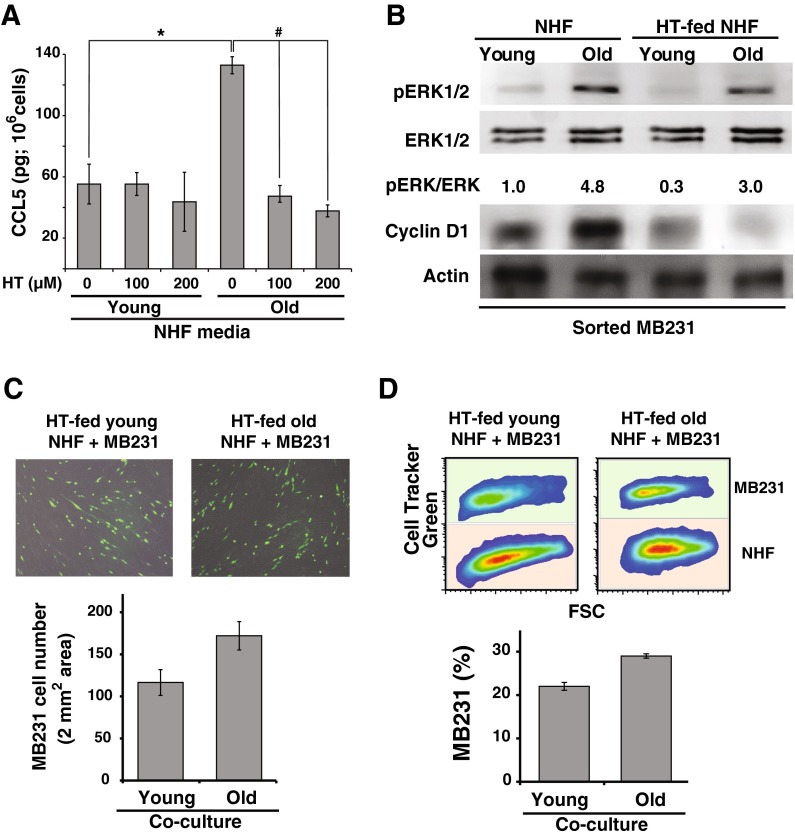Fig. 5.
Hydroxytyrosol suppresses age-associated increase in CCL5 accumulation in quiescent NHFs and inhibits their ability to activate the ERK1/2-cyclin D1 pro-proliferative pathway in MB231 cells. a An ELISA-based assay was used to measure CCL5 protein levels in conditioned media collected from hydroxytyrosol fed young and old quiescent NHFs. Asterisks and hashtag indicate statistical significance between corresponding treatments; n = 3, p < 0.05. b Western blot analysis of phosphorylated ERK1/2, ERK1/2, cyclin D1, and actin protein levels in MB231 cells separated from co-cultures of quiescent NHFs. Quiescent NHFs were cultured in presence and absence of hydroxytyrosol for 20 days (young) and 60 days (old) and used in co-culture experiments. c Left panels: representative microscopy images of 4-day co-cultures of CellTracker green-labeled MB231 cells and quiescent NHFs that were cultured in presence of hydroxytyrosol prior to the co-culture experiments (upper panel). MB231 cell numbers in 2 mm2 area were scored using NIH ImageJ (lower panel); n = 5. d Right panels: Flow cytometry measurements of CellTracker green-labeled MB231 cells in co-cultures of hydroxytyrosol-fed young and old quiescent NHFs (upper panel). The percentage of MB231 cells in 5-day co-culture of MB231 cultured on lawns of young and old quiescent NHFs (lower panel); n = 5

